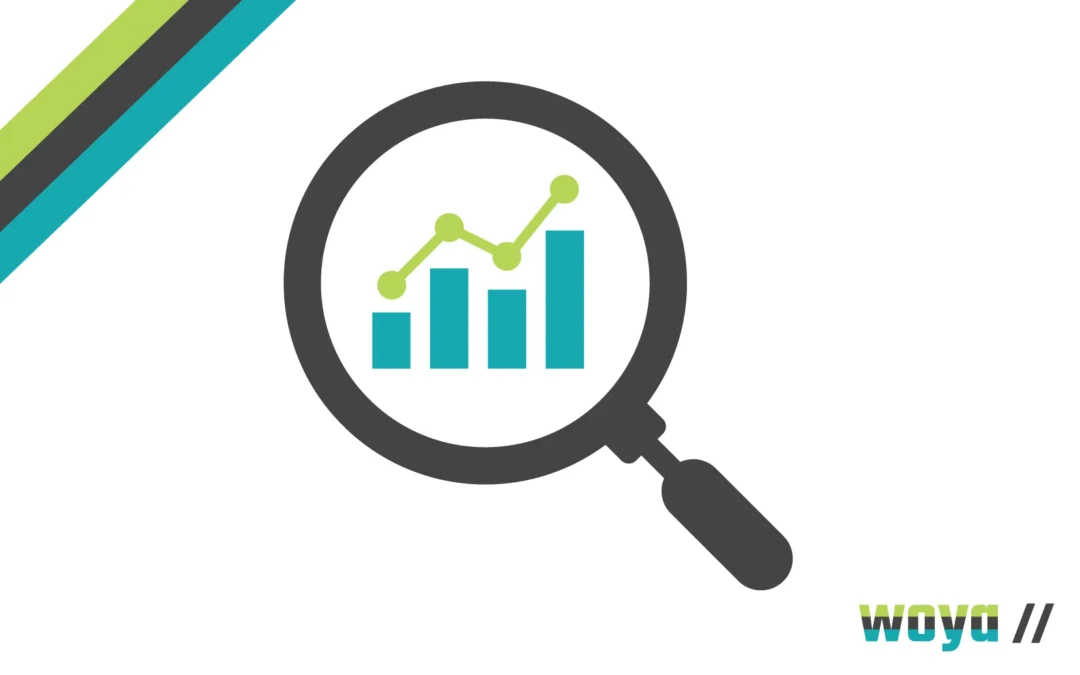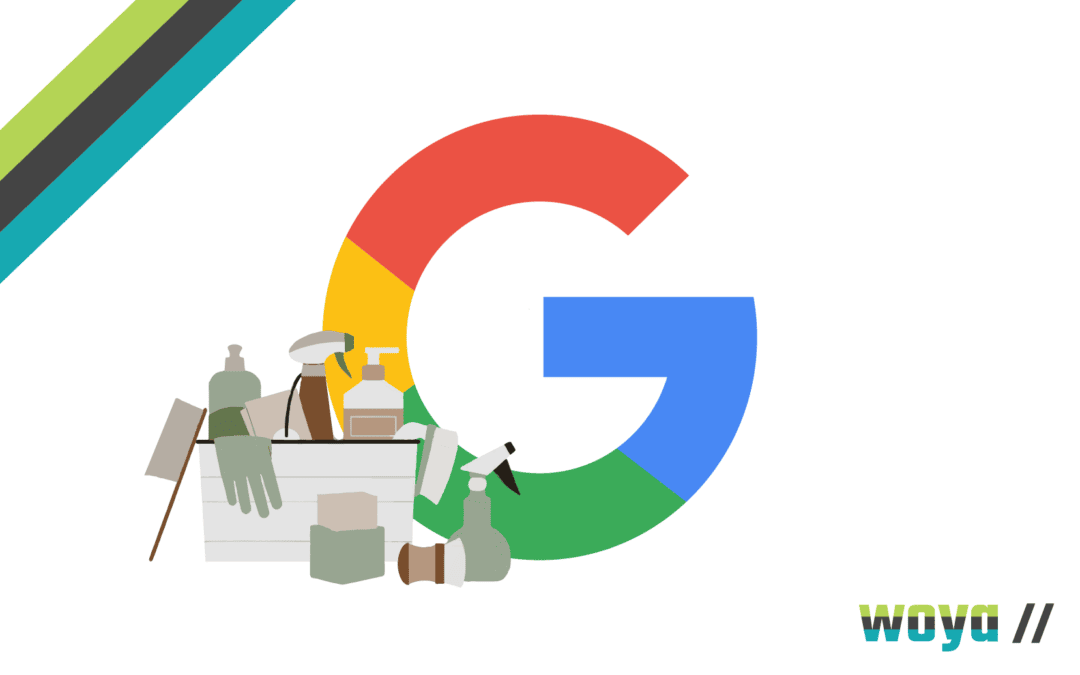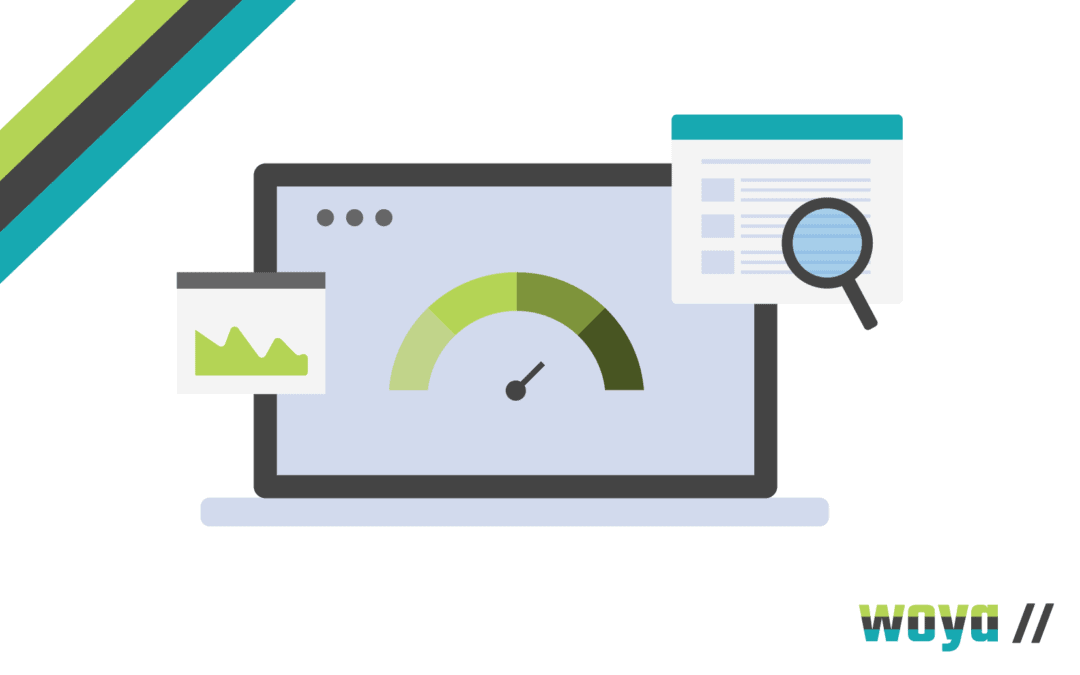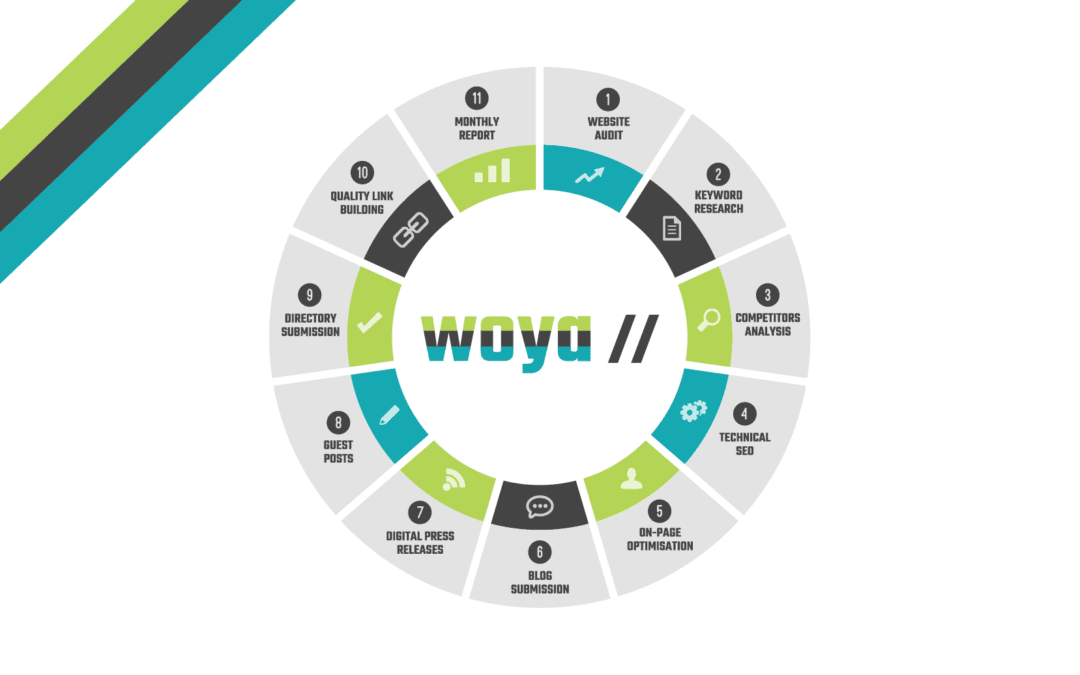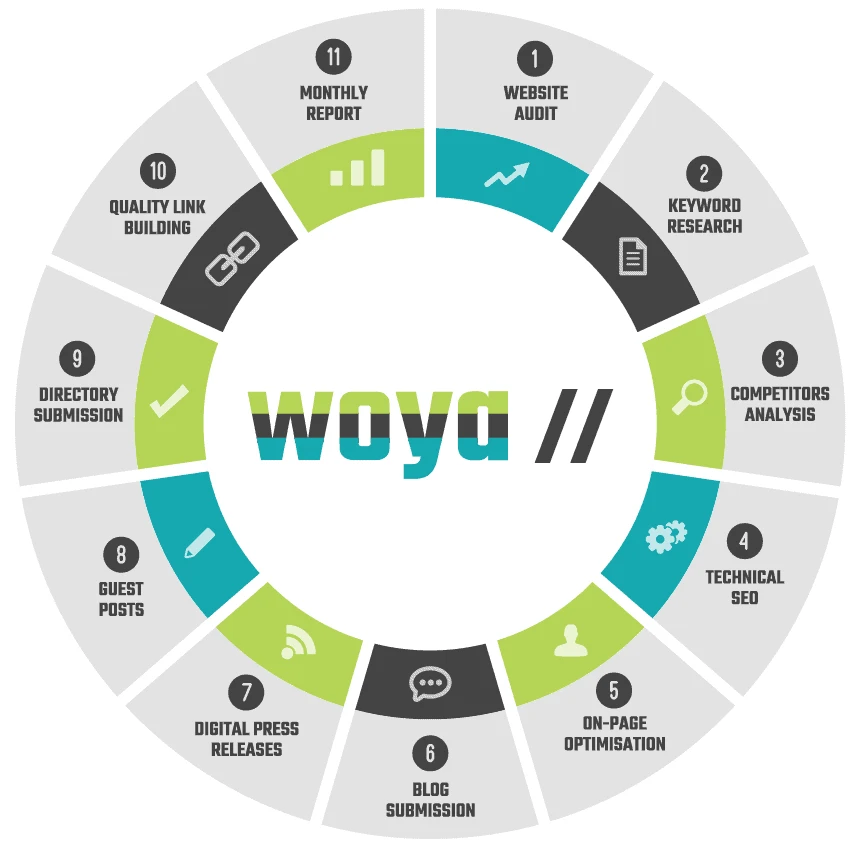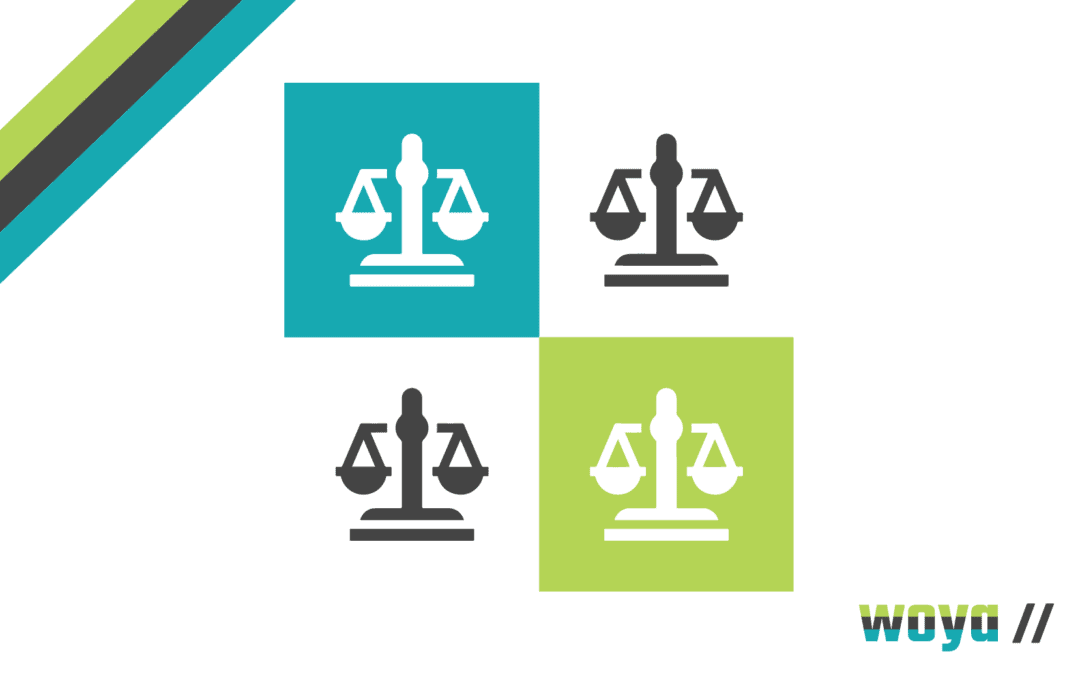Is your online brand image letting you down? It’s time to take back control and revive your online reputation! Woya’s Expert Guide to Online Reputation Management and Repair is here to help.
This guide offers an easy-to-follow roadmap of tips and tricks to get your online reputation management back on track. Don’t let the fear of what others think hold you back – start rebuilding your brand’s online reputation today!
This guide is for anyone who wants to make sure their brand online presence is working for them, not against them. We’ll provide practical advice and actionable insights on how to fix any mistakes you may have made in the past, and create a positive brand image that will serve you well in the future.
You don’t need any special skills or knowledge – this guide has everything you need to know about how to repair and maintain good online visibility and presence. Plus Woya Digital is available to help where you need specialist or speedy support for your businesses brand online reputation repair.
Woya’s Expert Guide isn’t just about fixing what went wrong before – it’s about taking control of your future.
With our guidance, you can learn how to build an effective online brand reputation profile that reflects the real you, so that employees and potential customers will see the best version of your business. So let’s get started on reviving your online brand image.
Understanding Online Reputation Management And Its Significance
It’s essential to understand why online reputation management is so important. Your online presence is often the first impression customers will have of you, and it can also affect your ability to recruit staff, amongst other things.
A bad online reputation can be hard to repair and can take a considerable amount of time and effort. The most common causes of a poor online reputation are negative reviews, inaccurate, outdated or negative content online.
It’s important to monitor your online presence regularly, as this helps you identify any issues that may be impacting your brand’s reputation. You should also consider setting up alerts for keywords related to your business or brand so that you’re aware if any negative press is posted about you or your company.
Repairing an online reputation takes time and is an ongoing process requiring a strategy. You must first address the issues causing the problem, then create positive content that will help improve your overall image. This could include things like responding positively to customer online reviews or creating blog posts that show off customer satisfaction and your expertise in the field.
Taking these steps will help restore trust with customers and build a positive image for yourself or your business over time.
Examining The Potential Damage To Your Online Reputation
As discussed, having an online presence is important, and understanding how to maintain a positive brand reputation is essential. However, it’s just as important to understand the potential damage that can be done to your online reputation if not managed properly.
The internet is vast and contains millions of users, many of whom are constantly sharing content. This means that any negative or false information posted can quickly spread across multiple platforms and reach a large audience.
This can lead to serious consequences for your brands’ reputation both online and offline. For example, a defamatory or derogatory statement made about you on social media could have lasting repercussions that follow you long after the incident has been resolved.
In addition to this, any negative review or public criticism of your business or services could also have a significant impact on your ability to attract new customers or partners. If there is a negative review posted about your organisation that contains incorrect information or harsh criticism, this can leave an indelible mark on potential employees and investors who may be searching for information about your business online.
On top of this, any negative comments left by former employees or clients may also discourage others from doing business with you in the future.
It’s clear then that examining the potential damage to your online reputation should not be taken lightly; it’s essential to be aware of how even seemingly small mistakes can have lasting effects on both personal and professional relationships.
Taking steps such as creating a comprehensive digital strategy and monitoring your online presence regularly will help ensure that any negative posts don’t go unchecked and help safeguard against further harm being done to your brand’s reputation.
Assessing Your Current Web Standing
The first step in reviving your online presence is to assess your current web standing. Start by doing an online search for yourself or your business online and taking note of the results.
Then, analyse the search results and content that appears and assess it based on how it reflects your business character and values. Ask yourself if the content paints a positive perception of your business, or if it needs improvement.
Next, take a look at any social media profiles you have. Make sure they accurately portray who you and your business are and what you’re about. Take time to update them regularly with social media posts, as this will help create an accurate picture, and present your business in a positive light online.
Finally, read online reviews from customers or employees on different review sites like Google, Yell, Yelp or Glassdoor. See what people are saying about your business, and make sure their comments match the image you want to project of your business online.
If there are negative reviews or comments, try to address them directly with an apology or explanation if appropriate.
Taking Proactive Steps To Sustain A Positive Image
Now that you have assessed your current web standing, it is time to take proactive steps to sustain a positive image. First and foremost, you must engage in a comprehensive digital audit.
This audit should assess the following:
-
- Your social presence
- The content associated with your business name
- Any negative content related to your business name
At Woya, we engage specialist search software for our clients to find references to your company, directors and brands, looking for all positive and negative sentiment across the internet and social media.
By taking stock of this information, you can identify areas where improvements are needed and make necessary changes. For instance, if there are old social media posts or photos that could be detrimental to your reputation, they can be removed or hidden from public view.
Updating or adding new content such as blog posts or videos with fresh material will help to refresh your online presence. Engaging in active conversations on social media is also an effective way to build strong relationships with other users and their audiences.
The second step towards maintaining a positive online presence is to create an effective communication strategy for responding to any negative feedback about yourself or your brand. It is important to remember that not every person who responds negatively is necessarily trying to cause harm; some may just need clarification or more information before forming an opinion.
It is essential to remain professional and courteous when replying in order to maintain positive relationships. Responding quickly and accurately will help set the record straight and avoid further damage from spreading.
Finally, staying up-to-date on the latest trends in digital marketing will help you stay ahead of the curve when it comes to online reputation management. Knowing which platforms are most relevant for promoting yourself or business allows you focus your efforts on those strategies with the greatest potential for success.
Using analytic tools can provide valuable insights into how people perceive you online so that you know which types of content resonates best with them.
By taking all these steps into consideration, you will be better equipped for sustaining a positive reputation online in the long run.
Seeking Professional Help For Reputation Recovery
If your online reputation is in dire need of repair, the best option might be to seek professional help.
Professionals specialising in online reputation management are familiar with the methods and tools necessary for successful repair. They typically employ a variety of tactics to improve your online presence, such as content creation, search engine optimisation, digital PR and monitoring of social media accounts.
Woya Digital provides unparalleled online reputation management and repair services. Our expert team understands the significance of maintaining a positive online presence and works to help you regain control over your brand’s image. We employ cutting-edge strategies to address negative reviews, suppress damaging content, and reinforce your online presence with a proactive approach.
By partnering with Woya Digital, you’ll benefit from an agreed strategy, personalised solutions tailored to your unique needs, backed by years of experience and a proven track record of success. Don’t let your online reputation hold you back – trust Woya Digital to revitalise your brand and secure your path to long-term success.
Whoever you choose to work alongside, discuss your expectations and objectives so that they can customise their services to suit your needs and timescales. This will ensure that you get the most out of the relationship and that you are both on the same page when it comes to achieving desired outcomes.
Be sure to keep track of progress regularly and provide feedback where needed so that everyone is working towards the same goal.
Advantages Of Investing In Your Online Reputation Management For Long-Term Success
Hiring a professional to help you repair your online reputation can be an invaluable decision. From expert advice to advanced strategies, the advantages of investing in your online reputation management are far-reaching and long-term.
Here are just a few of the key benefits you’ll experience:
-
- A comprehensive plan to target and neutralise negative information about you online
- Improved online visibility that attracts more customers or employees
- Increased trustworthiness among new customers or employees
- The ability to own and manage what others say about you on the web
- Lower risks associated with bad reviews, false information or accusations, or competitors’ smear campaigns
Not only will professionals help get rid of any unwanted information out there, but they can also provide guidance on how to protect yourself against future attacks.
By implementing proactive strategies such as maintaining a strong presence on social media, creating great content, and engaging with people who have had positive experiences with you, you can ensure that your online reputation is secure for years to come.
Additionally, having a well-crafted digital strategy in place helps showcase your best self and build trust among prospective customers.
Investing in your online reputation management does not end at just seeking out professional help. You must ensure that any negative content is addressed quickly and effectively, so it does not become entrenched in search results or linger in public view for too long.
It is also important to stay ahead of the curve by proactively monitoring what is being said about you online and taking steps to ensure that all content remains factually accurate and updated regularly.
With a committed effort focused on building up a positive image for yourself across multiple channels, your efforts will pay off in the long run.
Best Practices For Enhancing Your Online Presence
Enhancing online presence is essential in today’s digital world. To do so, there are a few best practices to follow.
First, it’s important to curate the content that appears on your website and other online profiles. High-quality images, videos, and text can help build trust with customers and create a more professional look for your brand.
Second, have an active social media presence on platforms such as Facebook, Twitter, Instagram, and LinkedIn. Share content regularly and engage with followers to build relationships and establish yourself as an authority in your industry.
Finally, use search engine optimisation (SEO) techniques to increase visibility on search engine result pages (SERPs). This includes optimising titles, descriptions, keywords, and images for each post or web page you create so that your content shows up higher in online search results.
By following these best practices for enhancing one’s online presence, you can effectively repair any damage done to your reputation or establish a strong presence on the online world from the start.
Common Mistakes To Avoid When Managing Your Online Persona
When managing your online presence, it’s important to be conscious of the common mistakes that can cause long-term damage. Ignoring your online presence can be one of the most costly errors you make. It’s essential to invest time in researching and understanding how your digital footprint is perceived by others. Here are some of the most common mistakes people make when trying to maintain their online persona:
Posting without thinking twice: Before you post anything online, take a moment to think about how it might be interpreted. Make sure that what you share is appropriate, accurate and in line with who you want to be seen as.
Focusing too much on getting noticed: It’s natural to want attention and appreciation for our efforts, but having an excessive focus on recognition can lead to oversharing or misrepresenting yourself. Be mindful of how often you post and what content you put out there.
Not engaging with your followers: Building relationships with those who follow or interact with your posts is essential for creating a positive online persona. Responding to comments and messages shows that you value their opinions and care about them as individuals, which will help build trust in your brand or reputation.
Recognise And Respond To Negative Reviews Or Comments About Your Business
Now that you’re aware of the common mistakes to avoid when managing your online persona, it’s time to move on to how to recognise and respond to negative comments or reviews about you or your business.
This is a situation that no one wants to face but unfortunately, it does happen. Even if you’ve done everything right, there may still be some people who don’t like what you offer and leave negative comments or reviews. To handle these correctly, it’s important to stay level-headed and respond in a way that won’t do more damage.
The first step is recognising when someone has left negative comments or reviews. This could be anything from a blog post criticising your services to an angry tweet directed at your company. It’s important to monitor the different platforms where people interact with your business and have someone dedicated to respond quickly and appropriately whenever something negative arises.
Once you’ve identified the negative comment, take some time before responding. If the comment is particularly inflammatory, it may be best not to respond at all – especially if doing so could trigger an even angrier response from the person who left the comment or review. However, for most other cases, it’s important to address the issue head-on in a polite manner that shows respect for the commenter and sincerity in wanting to resolve their concerns.
Your goal should be not just defusing any potential anger but also convincing the poster that they can trust your business in spite of their negative customer experience. Doing this will show other customers that you take customer service seriously, which could go a long way towards restoring any damaged reputation.
Responding graciously is key when dealing with negative comments or reviews about yourself or your business – even if those criticisms are unfair or unfounded. With patience and practice, you’ll soon become adept at tackling these issues gracefully and turning them into opportunities for growth and improvement instead of PR nightmares.
If the comment is on a public forum, rather than social media, it could be time to invest in online reputation management and repair services. Often forum comments can rank in Google for your brand name and commenting will only raise the profile and ranking of the post, so a considered approach is needed.
Often we will look to suppress the forum in Google by outranking it with positive news about your brand. Speak to Woya, as online reputation management and repair specialists, we can help!
Strategies For Promoting Positive Content About Your Company
The first step to reviving your online presence is to focus on promoting positive content about you or your company. This means actively seeking out ways to show off the best parts of who you are or what your business has achieved. You can do this through social media, blogs, digital press releases, and other forms of content marketing.
When creating content, make sure it’s well-written with engaging visuals and compelling stories that will draw readers in. Use keywords in titles and descriptions so that potential customers find them. And don’t forget to link back to your website or social profiles so people can easily connect with you.
Finally, once you have created some quality content, reach out to influencers and media outlets who might be interested in featuring it. Influencer marketing could help boost your visibility even further and give you an even better chance of improving your online reputation.
Tips To Monitor And Manage Social Media Accounts Effectively
When it comes to online reputation management and repair, monitoring and managing your social media pages is essential. The first step is to identify which accounts you need to be active on. If you’re a business, this likely includes Facebook, Twitter, Instagram, LinkedIn, YouTube and other platforms depending on your industry or field of expertise.
Once you have identified the accounts that need to be monitored, you’ll want to set up notifications for any updates or comments made on each platform. This will help ensure that you are kept aware of any potential issues or concerns being discussed about your brand or business.
Once notifications have been set up, it’s important to respond quickly and appropriately to any brand mentions or comments. This means responding in a courteous manner and addressing any issues raised in a timely fashion. Ignoring comments can lead to further damage if not addressed properly. Additionally, don’t forget to show appreciation for positive feedback; thanking customers not only helps build relationships but also demonstrates that their opinion matters to you.
Finally, it is important that all interactions with customers are professional yet friendly; following basic etiquette rules such as no swearing and avoiding controversial topics can help maintain a positive image of your company online. Remember that what you post on your social media platforms reflects directly on your company’s reputation so think twice before posting anything!
The Role Of Public Relations In Online Reputation Management
It’s important to understand the role of public relations when it comes to protecting and preserving your online reputation.
Public relations professionals help build and maintain a positive image for companies, organisations, or individuals by using media outlets to create and distribute content. This content can be used to influence public opinion, shape public discourse, and protect the reputation of their clients.
Digital PR strategies are essential in protecting your reputation online by leverage strategic messaging:
-
- Develop positive press releases and content surrounding you/your brand
- Positive social proof that can be shared on social media, on your website and internally.
- Help secure key influencers who can spread the word about you/your brand in a positive way
- Add more positive links to your company
- Help with search rankings
Having a strong presence in the public sphere is essential for building trust between yourself or your business, and possible customers.
A good digital PR strategy will ensure that messages are crafted carefully so as not to damage your reputation in any way. When done correctly, digital PR can be an invaluable resource for improving both how people view you online as well as how they interact with you offline.
Benefits Of Engaging With Your Customers And Prospects Online
Engaging with your customers and prospects online is a great way to boost your online presence. By connecting with them, you can learn more about their needs, build relationships, and increase brand awareness.
It also allows you to craft responses quickly to customer inquiries and complaints. Not only will this help you address issues promptly, but it will also show that you care about their customer experience.
The best part about engaging with customers and prospects online is that it’s free. You can do it through social media, email campaigns, or even conversations. Plus, the data collected from these interactions can be used to create personalised experiences for your customers – from customised discounts and offers to tailored content recommendations.
This helps build loyalty and trust among your audience, which ultimately leads to more sales and referrals.
By engaging with customers and prospects online, you not only revive your presence but also gain valuable insights into how people perceive your business. You can use this information to improve customer service and better meet their needs – something that’ll pay dividends in the long run.
All it takes is a little bit of effort on your part to make sure you’re providing an exceptional customer experience every time they interact with your brand.
Strategies For Generating Positive User Online Reviews And Testimonials
Generating positive reviews and testimonials can help to rebuild an online reputation. There are a few simple strategies that can be used to help increase the number of positive online reviews and testimonials on your site.
The first strategy is to reach out to existing customers or clients who have had good experiences with your business. Ask them directly if they would be willing to write a review or provide a testimonial about their experience. You can also offer incentives such as discounts or free products for those who write reviews.
Another strategy is to ask satisfied customers if they would be willing to post their review on platforms, such as Google or Facebook. This will allow you to reach a much wider audience than just your website visitors.
Additionally, it is important to make sure that you respond quickly and positively to any negative reviews so that other potential customers know that you take customer feedback seriously and are committed to providing the best possible service.
Add positive reviews to your website, this can be managed automatically in many cases with linking software to keep things up to date.
Finally, it is essential that you monitor all of the online platforms and review sites where people are talking about your business, so that you can address any issues quickly and efficiently before they become major problems. This will also give you an opportunity to engage with people who may have negative opinions about your business and turn them into customers.
Guidelines For Developing An Effective Online Marketing Plan
An effective online marketing plan is essential for any business that wants to succeed in the current online landscape.
To create an effective plan, there are several key elements to consider. First and foremost, companies must identify their target audience and create content accordingly. This means understanding the demographics of their ideal customer and creating content tailored specifically to them.
Additionally, businesses should develop a comprehensive strategy for how they will distribute their content across multiple platforms, such as social media or email marketing campaigns.
Finally, it’s important to track the performance of each campaign in order to optimise future efforts. By ensuring that all these elements are taken into consideration while developing an online marketing plan, businesses can ensure they stay competitive in today’s digital world.
Online Reputation Management and Repair Roundup
It’s clear that having a good online reputation is crucial for any business. By taking proactive steps to ensure a positive image and engaging with customers and prospects online, you can create trust, strengthen relationships and fuel growth.
Professional help can also be beneficial if the damage to your reputation is too extensive, to maximise your success, develop an effective digital marketing plan and use strategies such as generating positive user reviews and testimonials.
With the right approach, you can revive your online presence and increase the potential of your business.
It’s important to remember that creating a strong online presence takes time and effort. You need to constantly monitor what’s being said about you on social media, websites, forums and other areas in order to maintain a good reputation.
We advise businesses to stay up-to-date with current trends in order to keep up with the competition.
If you have a reputational crisis for your business, it is important to reach out to a team that can help. The Woya Digital team is experienced in online reputation management and turnaround. Suppressing poor reviews, comments and news is key and we can act quickly to engage an agreed plan of action for improvement.
By managing your online presence effectively, you can ensure that your business stands out from the crowd. With dedication and commitment, you will be able to gain the trust of customers and prospects alike – paving the way for increased success!


